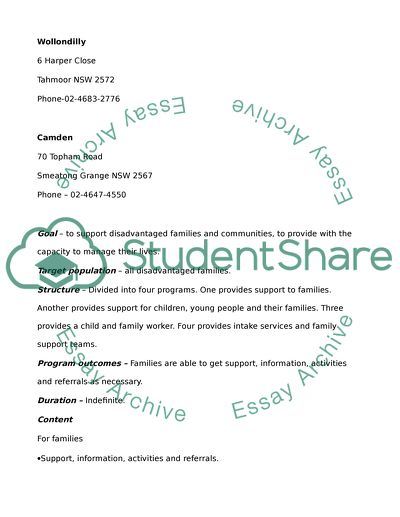Cite this document
(“Five Services for At-Risk Families Living in Poverty in Western Sydney Essay”, n.d.)
Retrieved from https://studentshare.org/sociology/1400795-5-services-for-at-risk-families-living-in-poverty-in-western-sydney-region-australia
Retrieved from https://studentshare.org/sociology/1400795-5-services-for-at-risk-families-living-in-poverty-in-western-sydney-region-australia
(Five Services for At-Risk Families Living in Poverty in Western Sydney Essay)
https://studentshare.org/sociology/1400795-5-services-for-at-risk-families-living-in-poverty-in-western-sydney-region-australia.
https://studentshare.org/sociology/1400795-5-services-for-at-risk-families-living-in-poverty-in-western-sydney-region-australia.
“Five Services for At-Risk Families Living in Poverty in Western Sydney Essay”, n.d. https://studentshare.org/sociology/1400795-5-services-for-at-risk-families-living-in-poverty-in-western-sydney-region-australia.


